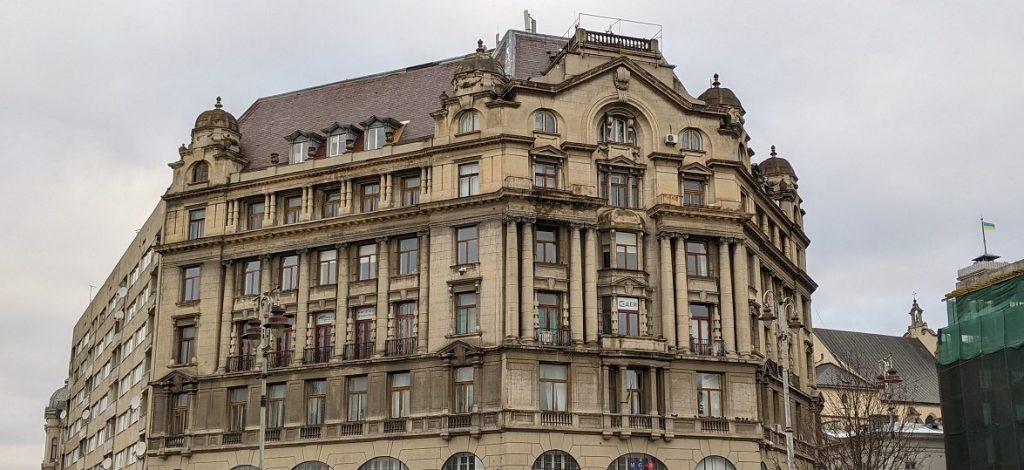Notable architects who lived and created in Lviv (Lwów / Lemberg) – and across Galicia.

- Julian Zachariewicz
- Alfred Zachariewicz
- Ivan Levynskyi
- Lev Levynskyi
- Juliusz Hochberger
- Wincenty Rawski, Sr.
- Wincenty Rawski, Jr.
- Karel Boublík
- Vasyl Nahirnyi
- Ivan Dolynskyi
- Napoleon Łuszczkiewicz
- Franciszek Skowron
- Alfred Kamienobrodzki
- Adolf Kamienobrodzki
- Hryhoriy Pezhanskyi
- Oleksander Pezhanskyi
- Teodor Talowski
- Jan Sas Zubrzycki
- Józef Sosnowski
- Tadeusz Obmiński
- Oleksander Lushpynskyi
- Kazimierz Mokłowski
- Juliusz Cybulski
- Władysław Sadłowski
- Michał Ulam
- Zygmunt Kędzierski
- Jan Bageński
- Witold Minkiewicz
- Eugeniusz Czerwiński
- Roman Feliński
- Tadeusz Wróbel
- Ferdynand Kassler
Julian Zachariewicz
Full name: Julian Oktawian Zachariewicz-Lwigród
[1837, Lviv — 1898, Lviv]
Polish architect and renovator.
Julian Zachariewicz graduated from the Royal Polytechnic Institute in Vienna and served as a professor and rector of the Lviv (Lwów) Polytechnic from 1881 to 1882. He was one of the founders of the Lviv architectural school, which greatly influenced the city’s architecture in the late 19th and early 20th centuries. Zachariewicz designed numerous public buildings and private residences in Lviv.
Styles: Historicism
Notable buildings:
- Technische Hochschule, today the main building of the Lviv Polytechnic (1873–1877) 12 Bandery St.
- Galician Savings Bank (1889–1891) 15 Prospekt Svobody
- Jan Styka Villa (1889-1890) 11 Lystopadovoho Chynu
- Julietka Villa (1891–1893) 14a Metropolohichna St.
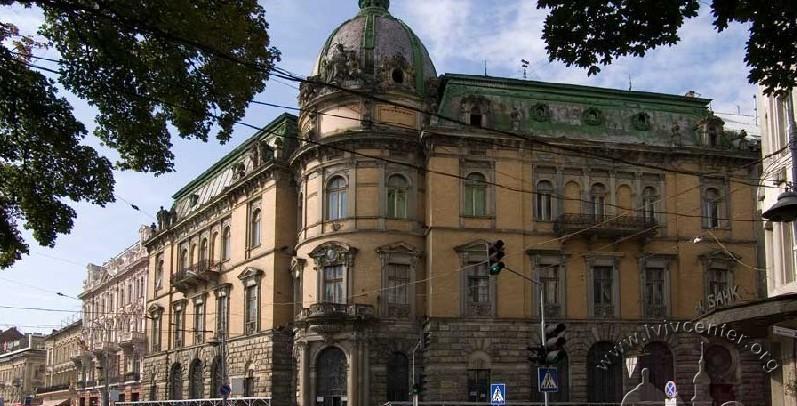
Alfred Zachariewicz
[1871, Lviv — 1937, Warsaw]
Polish architect. Son of Julian Zachariewicz.
Alfred Zachariewicz designed public and industrial buildings, bridges, tenements, villas, and freight stations. He worked in the design bureau of Ivan Levynskyi from 1892 to 1901 and later founded his own architectural bureau and construction company with Józef Sosnowski. In 1903, he established the largest factory in Galicia for reinforced concrete products, expanding the company’s activities in industrial construction. By 1914, his firm built over 200 bridges across Galicia.
Styles: Ornamental Secession, Rational Secession
Notable buildings:
- Mikolasch Passage (1898-1901) 1 Kopernyka St.
- Credit Society of Landowners (1912-1913) 4 Kopernyka St.
- Chamber of Commerce and Industry (1907–1910) 17-19 Prospekt Shevchenka
- Joint-Stock Cooperative Bank (1909-1911) 3 Hryhorenka Sq.
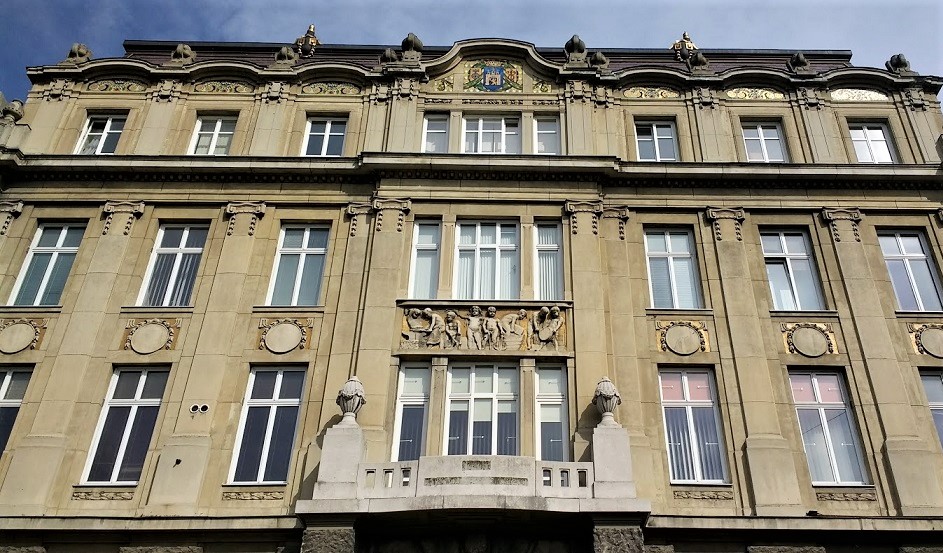
Ivan Levynskyi
Name in Polish: Jan Lewiński
[1851, Dolyna — 1919, Lviv]
Ukrainian architect, entrepreneur, and public figure.
Ivan Levynskyi was one of the most renowned architects of Habsburg Lviv and a professor of architecture at Lviv Polytechnic. He was an active public figure associated with the Ukrainian People’s Movement and the creator of the Hutsul Secession style.
In 1881, Levynskyi established an architectural and design bureau and soon after a building materials factory. Recognizing the potential of pottery, he acquired specialized equipment and a furnace to produce tiles, ceramic dishes, and more. Within just two decades, his company emerged as one of eastern Galicia’s most successful enterprises. Levynskyi’s firm played a pivotal role in the construction and restoration of numerous structures across Lviv and Galicia.
Remembered as a gifted architect, cunning businessman, effusive philanthropist, and a true patriot, Levinskyi is today considered to be the Man Who Built Lviv.
Styles: Secession, Hutsul Secession
Notable buildings:
- Designed
- Pasaż Mikolascha (co-designed with Alfred Zachariewicz) (1898-1901)
- Villas in Kastelivka (co-designed with Julian Zachariewicz)
- Sokolnia in Kolomyia
- Secession residential building (1906) 3 Pavlova St.
- Built by bureau
- Dnister Insurance Company Building (1905-1906) corner of Ruska and Pidvalna Sts.
- Main Railway Station (1902-1904)
- Church for the Discalced Carmelites (1895) 70 Chuprynky St.
- Chamber of Commerce and Industry (1907-1910) 17-19 Shevchenka Ave.
- Bursa of the National House Institute (1907) 14-14a Lysenka St.
- Gymnasium and Bursa of the Ukrainian Pedagogical Society (1906-1908) 103 Chuprynky St.
- Several Secession residential buildings on Bohomoltsia St.
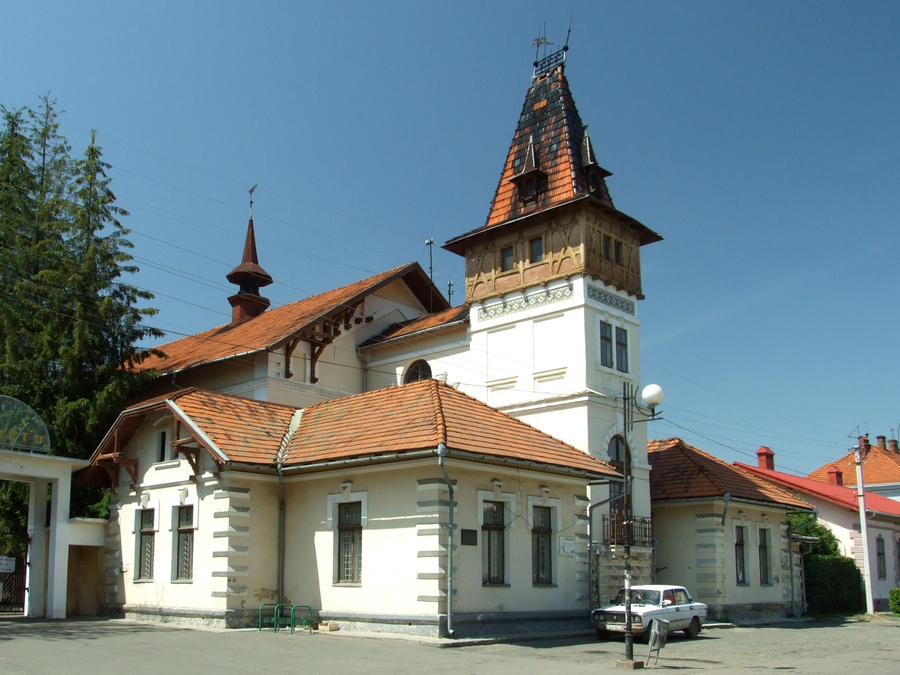
Lev Levynskyi
[1876, Demnia Vyzhnia (Skole) — 1963, Miechów, PL]
Ukrainian architect. Nephew of Ivan Levynskyi.
Lev Levynskyi graduated from Lviv Polytechnic and worked at Ivan Levynskyi’s architectural design office. He participated in the design of several Lviv buildings and designed many Ukrainian Greek Catholic churches in Eastern Galicia.
Styles: Hutsul Secession, Ukrainian church architecture
Notable buildings:
- Gymnasium and Bursa of the Ukrainian Pedagogical Society (1906-1908) 103 Chuprynky St.
- Gymnasium of the Basilian Sisters (1926) Kyryla i Mefodia St.
- Church of the Assumption of the Blessed Virgin Mary (1930–1935) Przemyśl
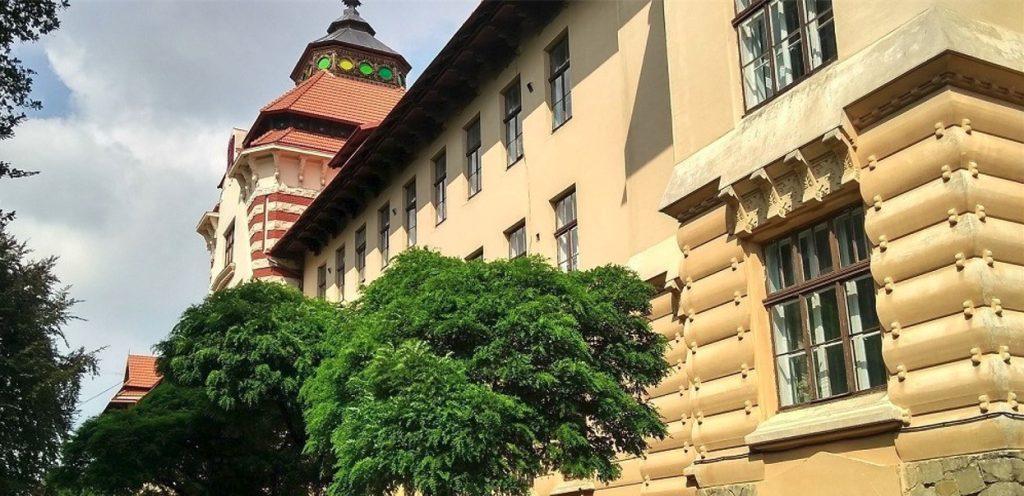
Juliusz Hochberger
[1840, Posen (Poznan) — 1905, Lviv]
Polish architect.
Juliusz Hochberger was known for his designs of churches, bridges, roads, hospitals, and railway stations in Lviv. He served as the head of the Municipal Construction Office for over three decades and was a member of the Polytechnic Society. Hochberger was also involved in organizing the Galician Regional Exhibition in Lviv in 1894.
Style: Historicism, neo-Renaissance, neo-Gothic
Notable buildings:
- Galician Sejm (1877-1881), now main building of Ivan Franko University
- Series of school buildings
- Military horse riding hall (maneż) of the infantry regiment (1889-1891) corner of Veteraniv and General Herkova Sts.
- Neo-Gothic entrance gate to Lychakiv Cemetery

Wincenty Rawski, Sr.
[1810, Czarnokońce — 1876, Lviv]
Polish architect and builder.
Wincenty Rawski, Sr. designed the neo-Gothic church in the monastery complex of the Sacré-Cœur in Lviv, which was among the city’s earliest examples of this architectural style.
Styles: Classicism and early Historicism
Notable buildings:
- A number of buildings of the Sacre Coeur monastery complex: completion of the wing (1858), neo-Gothic church (built in 1861) and the third monastery wing (1867)
- Reconstruction the Dzieduszycki Palace (1860-1869) 15 Lysenka St.
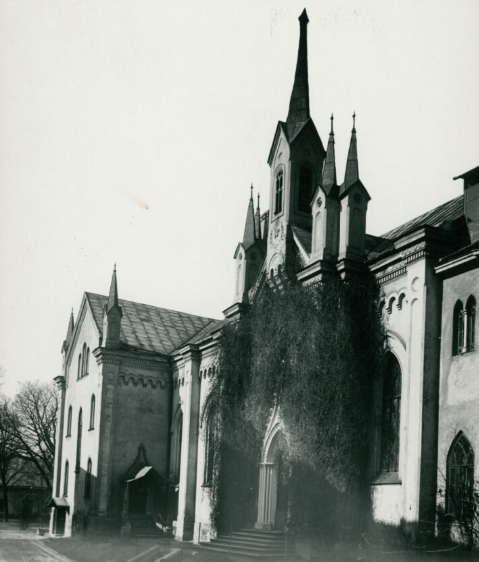
Wincenty Rawski, Jr.
[1850, Lviv — 1927, Lviv]
Polish architect and builder. Son of Wincenty Rawski, Sr.
Wincenty Rawski, Jr. co-founded the Polytechnic Society and held the presidency of the Architects’ Club. Rawski, Jr. actively contributed to Lviv’s architectural development and served on social and competition committees related to the city’s architecture.
Styles: Historicism, Secession, Art Deco
Notable buildings:
- Building of the Administration of the Imperial-Royal State Railways of Eastern Galicia (1885-1887) 3 Sichovykh Striltsiv St.
- Wulecka Barracks Complex (1895-1908) 5 Kniahyni Olhy St.
- Polytechnic Society building (1906) 9 Dudayeva St.
- Printing house (1895) 4 Lista St.
- Wincenty Rawski, Jr. Villa (1896) 61 Chuprynky St.
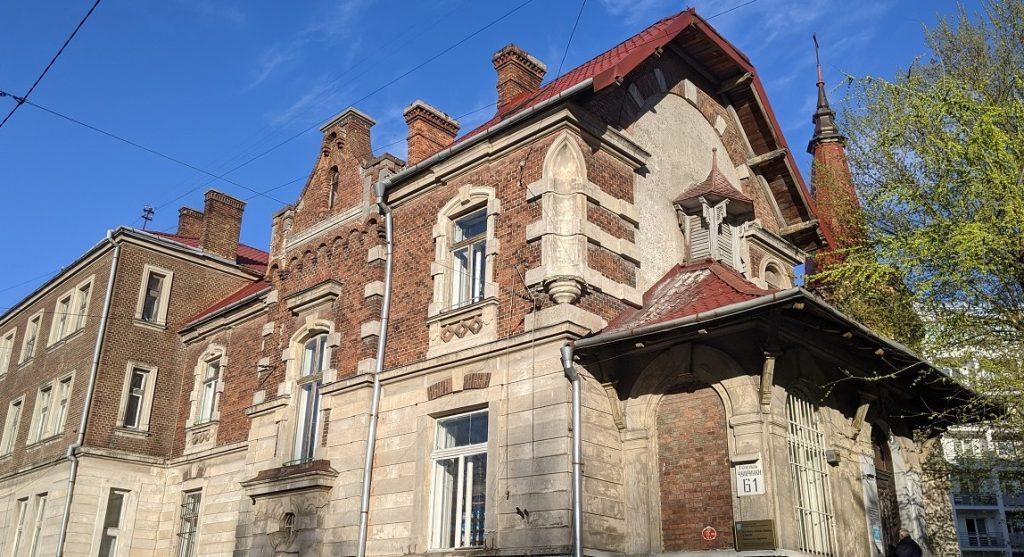
Karel Boublík
[1868, Kolinec, CZ — 1925, Lviv]
Lviv architect of Czech origin.
Karel Boublík’s architectural style transitioned from Historicism, particularly Neo-Baroque, to Secession and the second wave of Historicism. Boublík’s designs were characterized by originality, sculptural decoration, and metal ornaments, blending modernized historical styles with contemporary elements.
Styles: Historicism (especially Neo-Baroque), Secession
Notable buildings:
- Triumphal Arch in Honor of Emperor Franz Josef (1894) nonextant
- Complex of residential buildings (1898–1899) 6, 8, 10, 12 Parkova St.
- Buildings on Halytska and Soborna Squares (1897-1899)
- Administrative building (1901) 11 Sichovykh Striltsiv St.
- Sokół building (1912) Khodoriv (Chodorów)

Vasyl Nahirnyi
[1847, Hirne — 1921, Lviv]
Ukrainian architect, social activist, and public figure.
Vasyl Nahirnyi played a significant role in the Ukrainian cooperative movement and left a substantial architectural legacy comprising several hundred structures, including churches, chapels, parish houses, public buildings, and private residences. Nahirnyi’s most notable contributions are his rural Ukrainian Greek Catholic churches, with over 200 designs across Galicia. These churches were influenced by the Byzantine style and laid the foundation for the development of the modern Galician school of sacred architecture in the late 19th and early 20th centuries.
Styles: Neo-Byzantine
Notable buildings:
- Church of the Assumption of the Blessed Virgin Mary (1906-1911) Radymno, PL
- Church of the Assumption of the Blessed Virgin Mary (1885-1891) Olesko
- Church of St. Nicholas (1904) Tukhlia
- National Home (1905-1908) Borshchiv

Ivan Dolynskyi
[1852, Lviv — 1916, Lviv]
Ukrainian architect.
Ivan Dolynskyi studied at the Imperial-Royal Technical Academy in Lviv and also received training in decorative painting at the Vienna Industrial Museum, funded by the state. Dolynskyi worked in private technical offices and became a member of the Polytechnic Society in Lviv in 1879. He was also a member of the Lviv Society of Builders. At one point, he served as the city architect of Stryi.
Styles: Historicism, Secession, Picturesque
Notable buildings:
- Co-author with Bronisław Bauer of neo-Renaissance former Szymon Konarski School (1893) 91 Bandera St.
- Three neo-Romanesque villas with stylized Carpathian folk elements (1899) 24, 26, 34 (own residence) Lemyka St.
- Picturesque-style villa (1900) 3/5 Stusa St.

Napoleon Łuszczkiewicz
[1859, Kraków — 1906, Truskavets]
Polish architect.
Napoleon Łuszczkiewicz studied in Vienna and Kraków before settling in Lviv in 1887. Łuszczkiewicz was a member of the Polytechnic Society and headed the Builders’ Credit Union in Lviv. His architectural works included houses in historical styles, as well as villas that incorporated stylized elements of folk construction. Later in his career, he transitioned to the Secession style.
Styles: Historicism, Secession
Notable buildings:
- Residential building at 4 Tershakovtsi St.
- Villas at 28 & 32 Samchuka St.
- Austrian military barracks on Kulparkivska (1895-99) and Lychakivska (pre-1899) Sts.
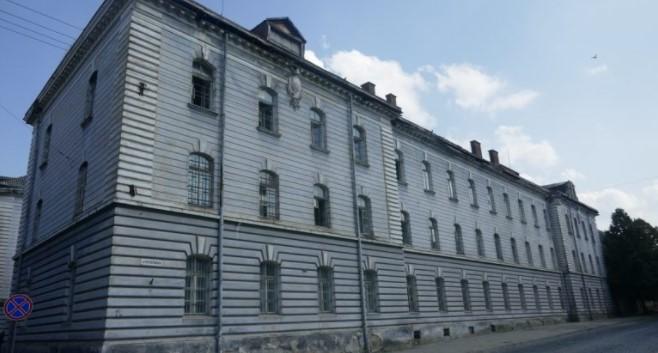
Franciszek Skowron
[1856, Ciężkowice — 1929, buried in Kraków]
Polish architect.
Franciszek Skowron was a member of the Polytechnic Society. He served as the Chief Engineer of the Construction Exhibition of 1892 in Lviv. In 1893, together with Julian Zachariewicz, he managed the construction works of over a hundred buildings for the General National Exhibition in Lviv. Skowron was also a private associate professor at Lviv Polytechnic, where he taught the history of architecture. He collaborated with the Bukovynian and East Galician Departments of Justice and built more than 65 judicial buildings. Skowron published a book titled Nasz przemysł budowlany na wystawie lwowskiej w r. 1892 (Our Construction Industry at the Lviv Exhibition in 1892), which explored the construction industry in Galicia.
Styles: Historicism
Notable buildings:
- Sokolnia in Rzeszów (facade decoration)
- Tax Directorate and Tax Office (1912) Stanisławów (Ivano-Frankivsk)
- The Polish National House in Chernivtsi (1904-1905)
- Palace of Justice in Chernivtsi (1904-1906)
- Palace of Justice in Lviv (1891-1895) 1-3 Kniazia Romana St.
- Several pavilions for the General National Exhibition, including the Palace of Art and the Matejka Masoleum (1894)
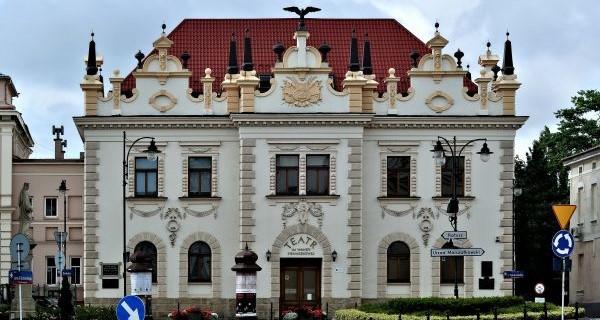
Alfred Kamienobrodzki
[1844, Tarnów — 1922, Lviv]
Polish architect and watercolor painter.
Alfred Kamienobrodzki was one of the first architects in Lviv to establish a comprehensive architectural and construction bureau. He designed numerous projects for residential, public, administrative, and industrial buildings in Lviv.
Styles: Historicism, modernized forms of historical styles
Notable buildings:
- Sokół building (first building 1883-1884, second building 1906-07) corner of Dudayeva and Kovzhuna Sts.
- Jewish orphanage at 34 Yanivska St.
- Power plant and a tram depot at junction of Heroyiv Maidanu and Sakharova Sts.
- Kamienobrodzki’s own villa at 2 Tekhnichna St.

Adolf Kamienobrodzki
[1871, Vienna — 1946, Wrocław]
Polish architect and engineer. Son of Alfred Kamienobrodzki.
Adolf Kamienobrodzki graduated from the Faculty of Architecture at Lviv Polytechnic and furthered his studies at the Ecole des Beaux Arts in Paris. After returning to Lviv, he worked in his father’s architectural studio, later in the office of engineer Stanisław Hołoniewski, and then for architect Zygmunt Kędzierski.
He authored Podręcznik dla budujących (Handbook for Builders) and wrote numerous columns published in the Czasopiśmie technicznym. He was a member of the Polytechnic Society and the Circle of Polish Architects. Kamienobrodzki also served on the jury for the competition to design the reconstruction of St. Anna in 1912 and the construction of the building of the Chamber of Crafts in the same year.
Styles: Historicism, Modernism
Notable buildings:
- Tram depots in the 1920s
- Former sanatorium of the Social Insurance Society (1930s) 31 Lysenka St.
- Extension of the wing of the Palace of the Galician Sejm

Hryhoriy Pezhanskyi
Name in Polish: Grzegorz Peżański
[1860, Pchany — 1925, Lviv]
Ukrainian engineer-architect and public figure.
Hryhoriy Pezhanskyi served as the Director of the Dnister Insurance Company and was one of the founders of the Ukrainian Technical Society. Pezhanskyi was a member of the board of NTSh (Shevchenko Scientific Society), the Ukrainian Pedagogical Society, and the Board of Trustees of the People’s House and the Stauropean Institute in Lviv.
Styles: Historicism
Notable buildings:
- Women’s Teachers’ Seminary in Lviv (1899) 7 Tuhan-Baranovskoho St.
- Kopernik Natural Society building (1911) 8 Kyryla i Mefodia St.
- Own residence (late 19th century) 22 Vitovskoho St.
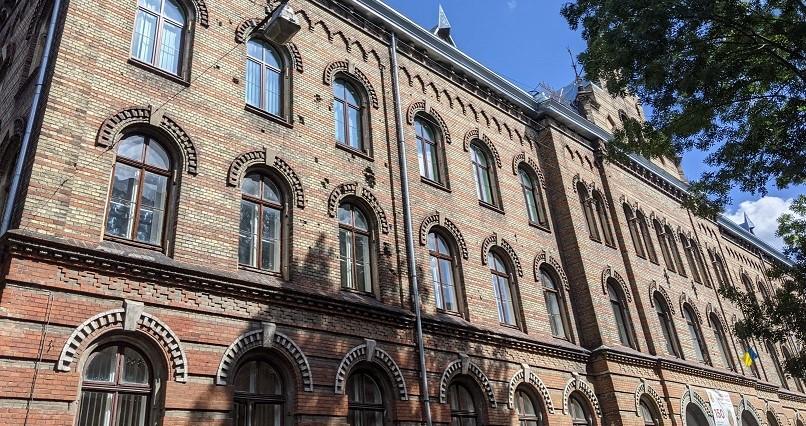
Oleksander Pezhanskyi
[1892, Lviv — 1972, Downers Grove, USA]
Ukrainian architect and photographer, painter, soldier of the Ukrainian Galician Army. Son of Hryhoriy Pezhanskyi.
Oleksander Pezhanskyi designed buildings in Lviv, as well as churches and national homes (narodni domy) across Galicia.
Styles: Art Deco, Functionalism
Notable buildings:
- Residential buildings for Vlasna Khata Ukrainian Cooperative (1927-1929) 26-40 Piskova St.
- Maslosoyuz commercial industrial building (1932) Brativ Mikhnovskykh and Holovatskoho Sts.
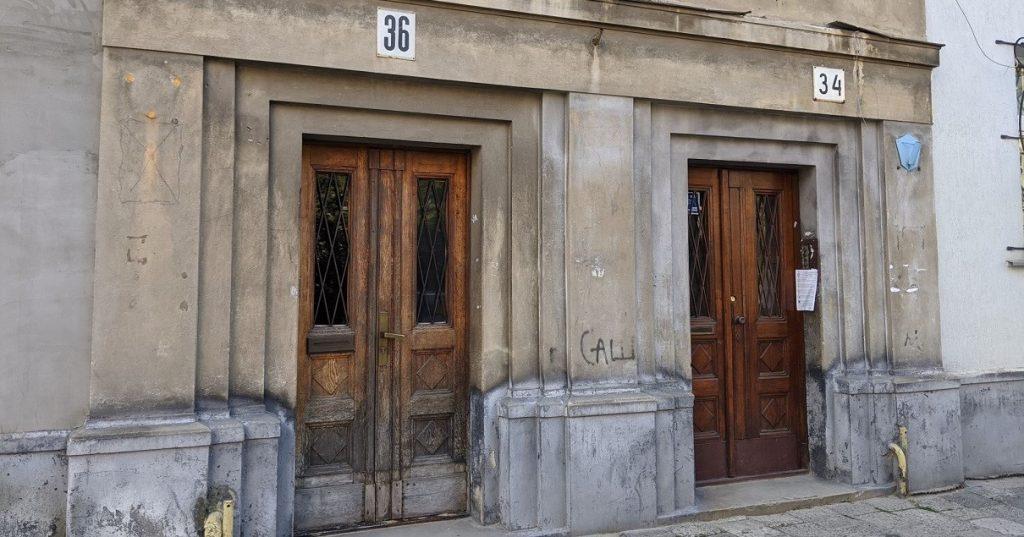
Teodor Talowski
[1857, Zasów — 1910, Lviv]
One of the most important Polish architects of the late nineteenth and early twentieth centuries.
Often referred to as the “Galician Gaudi” or “Polish Gaudi,” he skillfully combined late Historicism with Modernist influences. Talowski’s portfolio includes various structures such as apartment buildings, villas, churches, chapels, Sokół buildings, and public buildings found throughout Galicia, Kraków, Lviv, and other cities.
After completing his gymnasium education in Kraków, Talowski pursued further studies in architecture under the guidance of Karl König in Vienna. Subsequently, he relocated to Lviv to study under Professor Julian Zachariewicz. Returning to Kraków, Talowski took on the role of a professor at the Higher School of Technology and Industry while simultaneously establishing himself as a professional architect. In 1901, he was appointed as the chair of the Department of Drawing and later the Department of Medieval Architecture Composition at Lviv Polytechnic, further contributing to architectural education and practice.
Styles: Picturesque Eclecticism, Historicism, Neo-Gothic, early Modernism
Notable buildings:
- Roman Catholic Church of St. Elizabeth (1903-1911)
- Assumption of St. Mary Church (1910-1911) Kamianka-Buzka
- Numerous apartment buildings in Kraków
- Sokolnia in Jarosław (1899-1900)
More examples of his work here
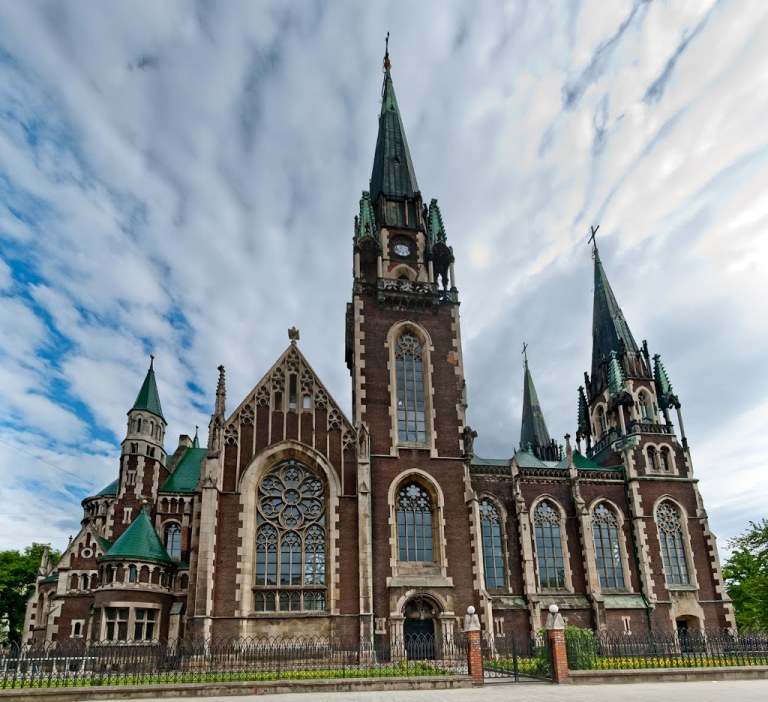
Jan Sas Zubrzycki
[1860, Tłuste — 1935, Lviv]
Polish architect, historian, and theorist of architecture.
Jan Sas Zubrzycki gained recognition for his work in the neo-Gothic style and is credited with originating the Vistula Gothic Style (gotyk nadwislanski), a manifestation of Poland’s national architectural style. Zubrzycki designed numerous churches, residential buildings, and public structures. Until 1886 he worked at Lviv Polytechnic. He was a member of the Polytechnic Society, Society for the Protection of Monuments of Art, Corresponding Member of the Group of Conservatives of Eastern Galicia.
Styles: Neo-Gothic, Vistula Gothic
Notable buildings:
- St. Joseph’s Church (1905-1909) Podgórze, Kraków
- Sokolnia (1910) Brzozów
- St. Stanislav Church (1918) Chortkiv
- Former Church of St. Francis (1930) 134 Zamarstynivska St., Lviv
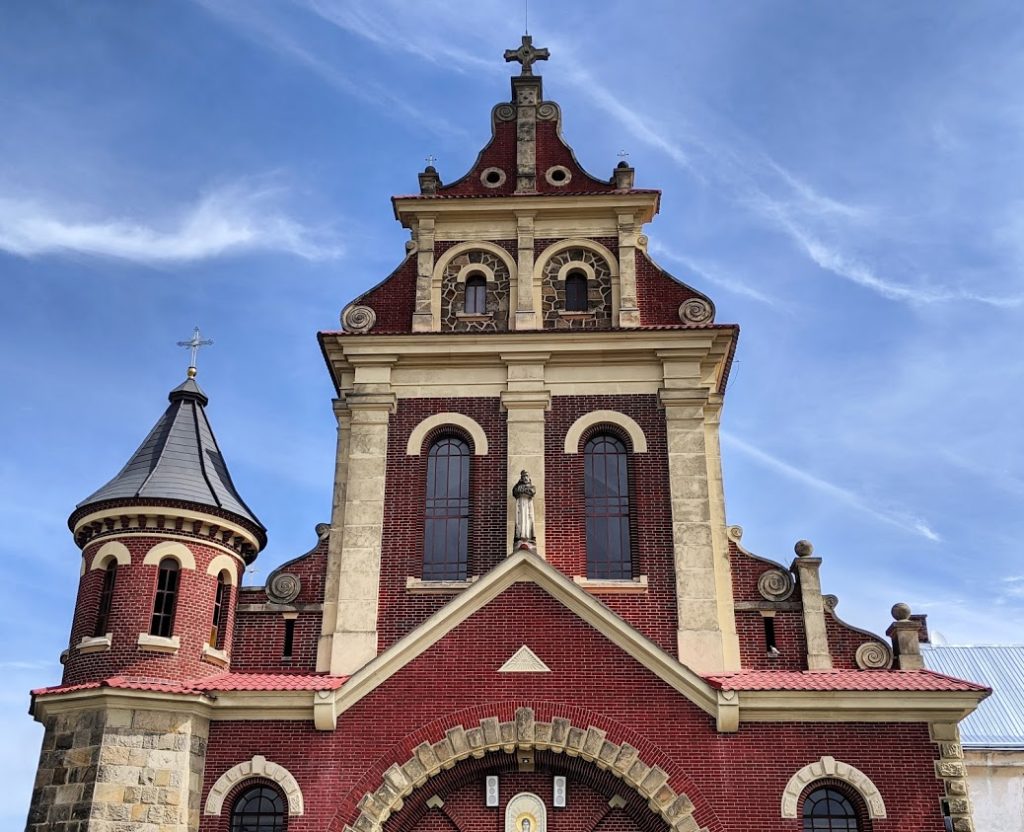
Józef Sosnowski
[1865, Marianówce — 1940, Milanówek]
Polish architect and civil engineer.
Józef Sosnowski was a member of the Polytechnic Society, from 1901 to 1902 serving as a board member and deputy secretary. Sosnowski also participated as a jury member in the competition for the design of the building of the Polytechnic Society. His contributions to the architectural field were notable during his time.
Styles: Late Historicism, Zakopane Style, Rational Secession
Notable buildings:
- Teodor Balaban’s chynshovyi Building (1908-1910) 21 Halytska St. (co-designed with Alfred Zachariewicz)
- Assicurazioni Generali Insurance Company Building (1908-1910) 3 Kopernyka St. (co-designed with Alfred Zachariewicz)
- Polish Academic House (1906-1907) 7 Hertsena St. (co-designed with Alfred Zachariewicz)
- Venetian palace style residential building (1901) 50-52 Chyprynky St.
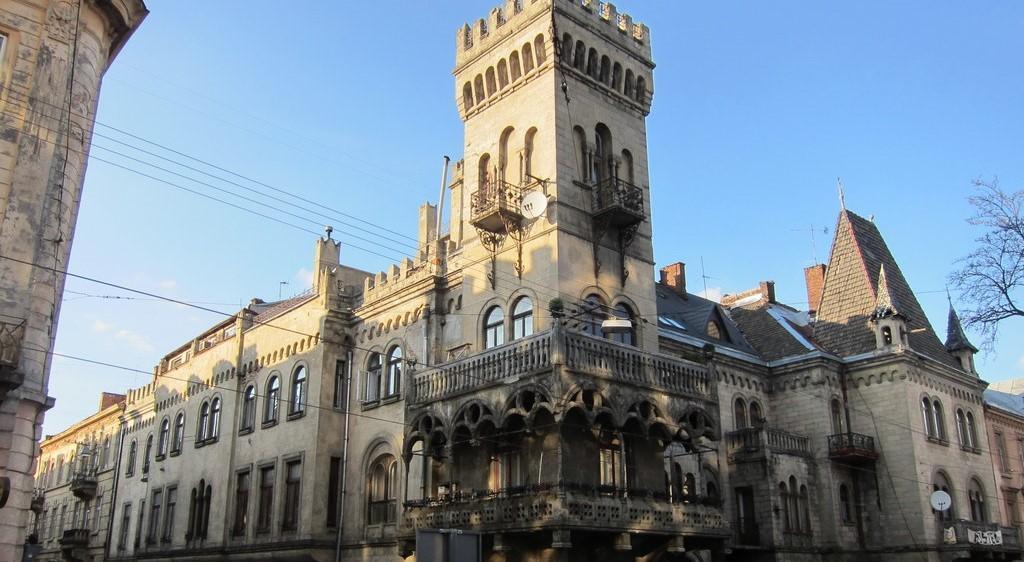
Tadeusz Obmiński
[1874, Lviv — 1932, Lviv]
Polish architect, rector at Lviv Polytechnic, and professor.
Tadeusz Obmiński studied traditional folk construction in Galicia. He exhibited drawings of wooden architecture at an exhibition in the Chapski Palace in Kraków in 1905. In 1910, he exhibited photographs of samples of wooden architecture at an architectural exhibition in Lviv. He is especially known for designing the facades of ornamental Secession buildings.
Styles: Ornamental Secession
Notable buildings:
- Dnister Insurance Company Building (1905-1906) 20 Ruska St. (co-designed with Lushpynskyi)
- Jan Stromenger’s Trading House (1906) 4 Hryhorenka Sq.
- Narodna Hostynytsia (1904-1906) 1 Kostiushka St.
- Adolf Segal House (1904-1905) 6 Skoryka St.
- Tenement house (1906) 6 Bohomoltsia St.
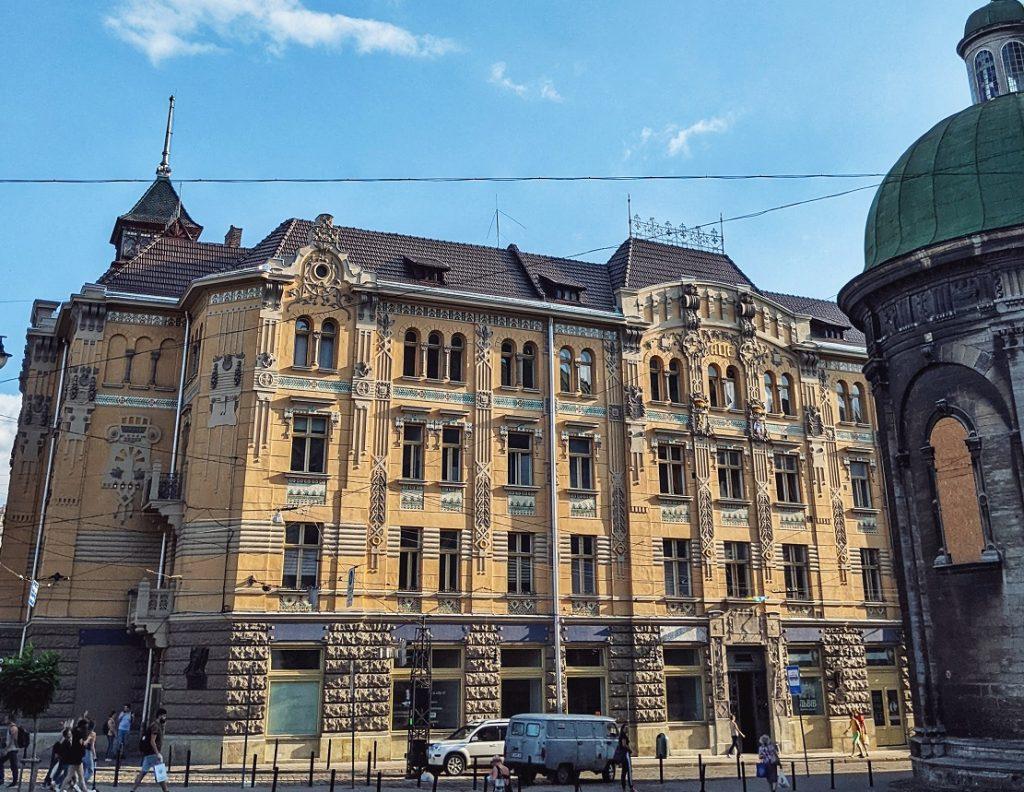
Oleksander Lushpynskyi
[1878, Butsniv — 1943, Lviv]
Ukrainian artist and architect.
Oleksander Lushpynskyi studied under Ivan Levynskyi and the worked at his firm for years, designing or contributing to many of the firm’s projects. He actively took part in the search for a Ukrainian style in architecture, designing buildings in Hutsul Secession. He studied folk wooden construction, sketching examples of Hutsul and Boykо buildings. Іn 1920, he published an album of drawings “Wooden Churches of Galicia of the 16th-18th Centuries.”
Styles: Secession, Hutsul Secession, Byzantine-Romanesque Revival
Notable buildings:
- Dnister Insurance Company Building (1905–1906) (co-designed with Obminski) 20 Ruska St.
- National House (1910-1911) Kamianka-Buzka
- Co-architect of former Mykola Lysenko Institute of Music (1913-1916) 5 Shashkevycha Sq.
- Ivan Trush Villa (1910)

Kazimierz Mokłowski
[1869, Kosów — 1905, Lviv]
Polish architect, publicist, art historian, promoter of folk art, socialist activist, and journalist.
Kazimierz Mokłowski made significant contributions to the field of art and cultural preservation. He published Sztuka ludowa w Polsce (Folk Art in Poland) in 1903. Additionally, he documented ancient wooden churches in Galicia, leaving behind valuable records of architectural heritage.
Styles: Zakopane Style, Moorish Revival
Notable buildings:
- Zakopane style influenced residential building (1904-1906) 38 & 40 Pekarska St.
- Former M. Lazarus Jewish Hospital (1898-1901) 8 Rappaporta St.
- Apolinary Tarnawski’s sanatorium (1895-1900) Kosiv (Kosów)
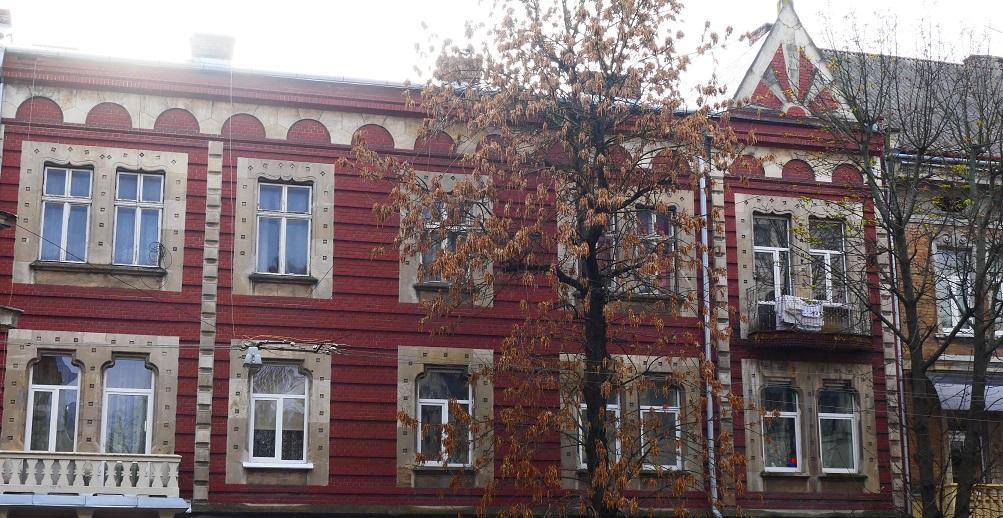
Juliusz Cybulski
[1859, Łańcut — 1924, Lviv]
Polish architect.
Juliusz Cybulski studied at Lviv Polytechnic. In 1882, he began his apprenticeship in the design office of Wincenty Rawski, Jr. Cybulski furthered his career by founding a construction company with Ludwik Baldwin-Ramułt in 1885. He became a member of the Polytechnic Society and held the position of treasurer from 1893 to 1895, as well as vice-president of the Chamber of Engineers from 1904 to 1905.
Styles: Historicism, Secession
Notable buildings:
- Apartment building (1890) 15 Hlibova St.
- Apartment building (1896–1898) 9 Hlibova St.
- Own house and studio (1907) 38 Chuprynky St.
- Provincial Bank of the Kingdom of Galicia and Lodomeria (Bank Krajowy) (designed in 1895, completed in 1903) corner of Kostiushka St. and Hryhorenka Sq.
Firm supervised construction of:
- Main post office building (1887-1889) 1 Slovatskoho St.
- Greek Catholic seminary designed by Sylwester Hawryszkewycz (1887-1889)
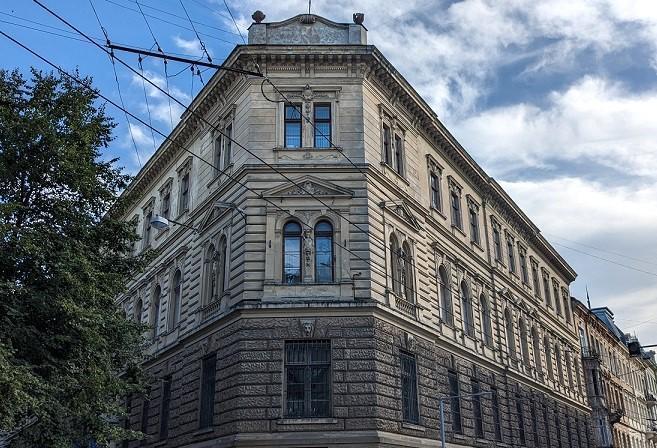
Władysław Sadłowski
[1869, Lviv — 1920, Lviv]
Polish architect.
Władysław Sadłowski began his career in Zygmunt Gorgolewski’s team, contributing to the interior design of the Lviv Opera in 1899. Later, he worked in the architectural studios of Ivan Levynskyi and Wincenty Rawski before establishing himself as an independent architect. His early works exhibited a historicist style, while his later works embraced the Secession style, making him one of the distinguished representatives of this architectural movement in Lviv.
Styles: Historicism and Secession
Notable buildings:
- Lviv Railway Station (1899-1904)
- Industrial School Building (1907–1908) 47 Snopkivska St.
- Zygmunt Rozwadowski’s Villa (1905) 27 Kotliarevskoho St.
- Galician Musical Society building, today Lviv Philharmonic (1905-1908) 7 Skoryka St.
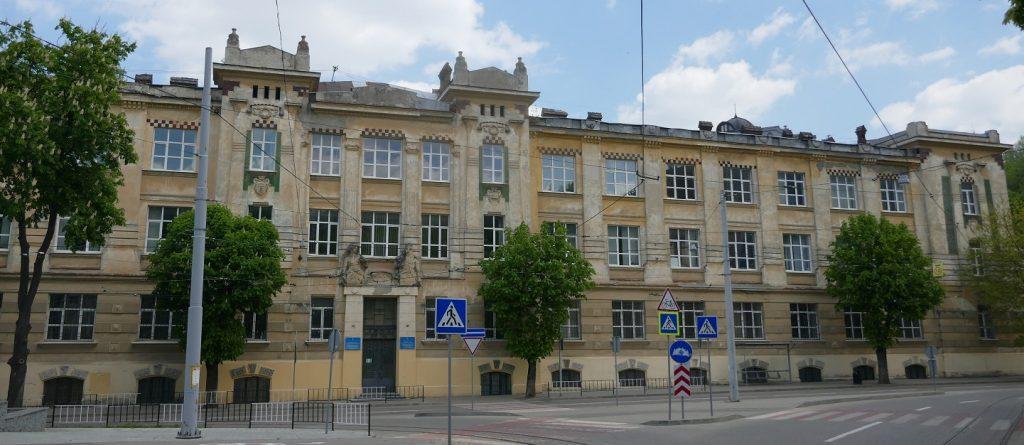
Michał Ulam
[1879, Lviv — 1938, Monte Carlo]
Jewish architect, building contractor, and lumber industrialist.
Michał Ulam co-founded a design and construction bureau with Zygmunt Kędzierski in 1903. The firm experienced rapid growth and conducted construction projects based on their own designs as well as those from third-party architects. Notable employees of the bureau included Tadeusz Obmiński, Roman Feliński, and Ferdynand Kassler. Ulam’s personal contributions to individual projects were often more as an inspirer than a designer.
Ulam resided in Lviv at 55 Ivana Franka Street, in a house that he himself designed in 1911. The same house was also home to his nephew, Stanisław Ulam, a renowned mathematician and physicist who later played a pivotal role in the development of the hydrogen bomb in the United States. Ulam’s daughter, Rozalia, married architect Roman Feliński.
In 1912, Ulam initiated the creation of the Central Union of Merchants and Industrialists. He also served as the chairman of the Society of Jewish Craftsmen, a key organization within the Union of Jewish Economic Organizations.
Styles: Secession, Post-Secession, Modernism
Notable buildings:
- Ulam’s house (1911) 55 Ivana Franka St. (designed by himself)
- Narodna Hostynytsia (built by his firm) 1 Kostiushka St.
- Adolf Segal House (built by his firm) 6 Skoryka St.
- Department store, today Magnus (built by his firm) 1 Shpytalna St.
- Kulparkiv Psychiatric Hospital complex (1904-1980) (built by his firm)
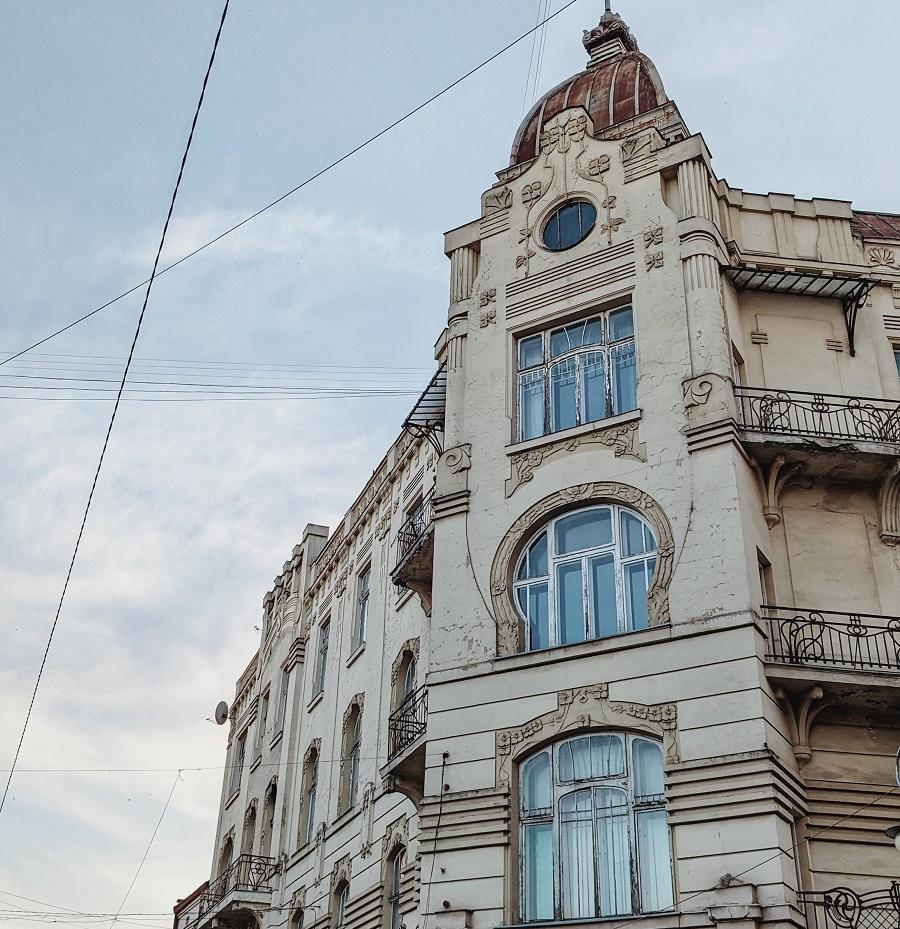
Zygmunt Kędzierski
[1839, Sośnica, PL — 1924, Lviv]
Polish architect, railway engineer, and entrepreneur.
Zygmunt Kędzierski graduated from the Lviv Industrial School and played a significant role in the construction of railway stations in Chernivtsi and Iasi. Kędzierski headed the office Przedsiębiorstwo Budowlane, also known as the “Building Bank.” Under his leadership, the construction of the main building of Lviv Polytechnic (1873-1877) and the Galician Savings Bank was successfully managed. In 1878, he established his architectural bureau. In 1903, Kędzierski co-founded a design and construction bureau with Michał Ulam. While he was initially a co-owner of the company, some of the projects were personally signed by Ulam, although Kędzierski’s involvement was more as an inspirer than a designer. He became a member of the Polytechnic Society in 1877 and later joined its board in 1881. Kędzierski was part of the circle of organizers of the Galician Regional Exhibition in 1894.
Styles: Historicism, Modernism
Notable buildings:
- Belle-Vue Hotel (1895-1896) 27 Svobody Ave.
- Residential building (1902) 8 Hnatiuka St.
- Residential building (1897-1898) 14 Shevchenka Ave.
- Kulparkiv Psychiatric Hospital complex (1904-1980) (built by his firm)
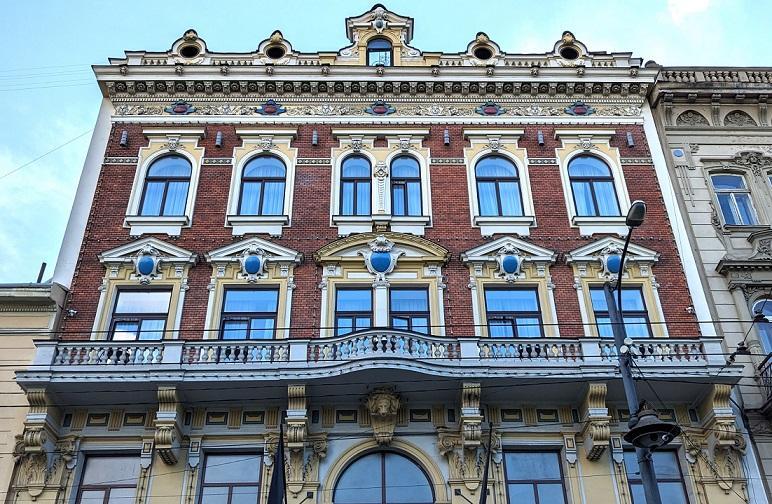
Jan Bageński
[1883, Soroky (today Moldova) — 1967, Lviv]
Architect and lecturer at Lviv Polytechnic.
Jan Bageński served as a lecturer and later became a professor during the interwar period at Lviv Polytechnic. Bageński specialized in teaching architectural composition based on classical forms. His architectural repertoire included various types of buildings, such as schools, residential buildings, and villas. Bageński predominantly worked in the idiom of Neoclassicism. During the building boom of the early 1910s, he collaborated with the builder Wojciech Dembiński to construct several of Lviv’s largest apartment houses. After World War I, Bageński successfully embraced both Neoclassical projects, and designs influenced by the principles of the Modern Movement.
Styles: Secession, Neoclassicism, Functionalism
Notable buildings:
- Janina Karłowicz Women’s Household Management School (1912-1913) 38 Stusa St.
- House of the General Insurance Company (1937-1939) 12 Zelena St.
- Ludwik Hirsch’s Building (1911-1912) 44 Konovaltsia St.
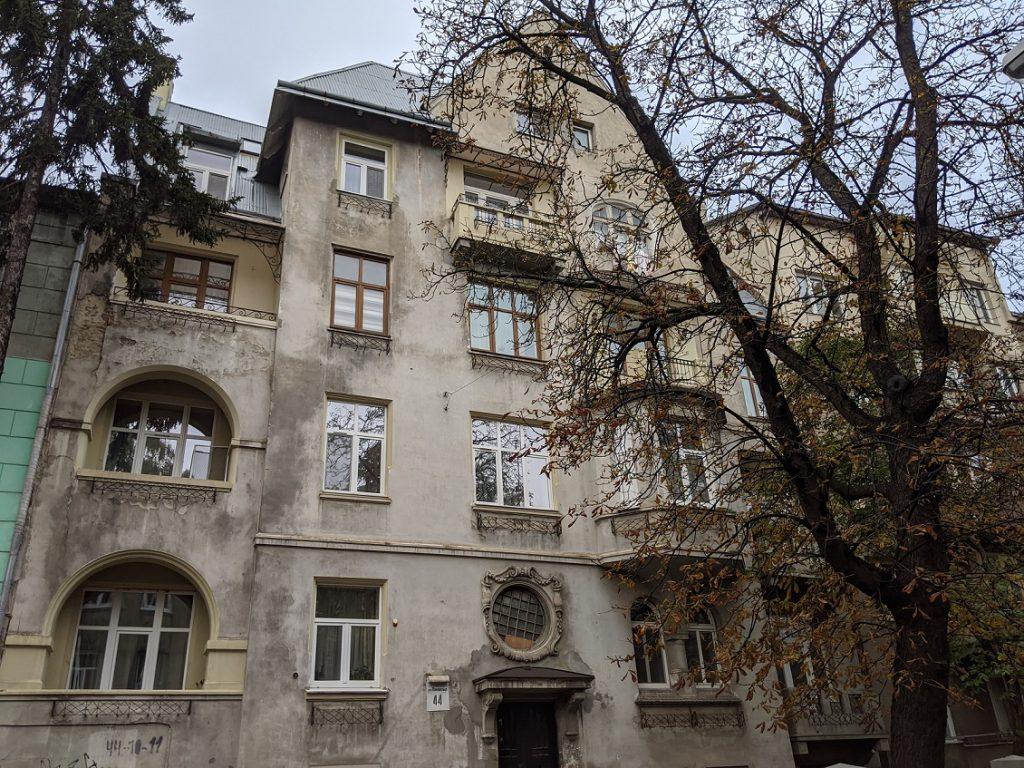
Witold Minkiewicz
[1880, Irkutsk — 1961, Gdansk]
Polish architect, teacher, and rector at Lviv Polytechnic.
Witold Minkiewicz was recognized as one of Ivan Levynskyi’s talented assistants. Minkiewicz played an active role as an architectural critic and theoretician, and he co-founded Zespół, an association of young Lviv architects and designers promoting a decorative post-Secession style. During the 1920s and ’30s, he earned a reputation for his skill in designing residential buildings, including the notable block at Stryiska 36-42.
Styles: Rational Secession, Functionalism
Notable buildings:
- Co-author with Władysław Derdacki of block of Secession buildings (1908-1909) 2, 4, 6 Bandery St.
- Co-author with Władysław Derdacki of original design of the building of the Prague Credit Bank (1911-1912) 17 Svoboda Ave.
- Machine laboratory of the Lviv Polytechnic (1925-1927) 5 Ustiyanovycha St.
- Functionalist buildings for employees of the Pension Institution (1926) 24, 26, 28, 28-a Kyivska St.
- Early Functionalist residential block (1927-1929) 36-42 Stryiska St.

Eugeniusz Czerwiński
[1887, Lviv — 1930, Lviv]
Polish architect and professor at Lviv Polytechnic.
Eugeniusz Czerwiński began his career at Ivan Levynskyi’s firm and later joined the architectural department of Lviv Polytechnic as a faculty member. Notably, Czerwiński undertook architectural commissions for Ukrainian clients prior to World War I. His architectural projects in the 1920s exhibited a classicist Art Deco style, and in his final years, he shifted toward designing in the functionalist style.
Styles: Neo-Classicism
Notable buildings:
- Mykola Lysenko Institute of Music (1913-1916) 5 Shashkevycha Sq.
- Exhibition pavilions for the Eastern Fair (1921-1924)
- Administrative building of the Chodorów sugar factory (1924) 19 Dudayeva St.
- Residential building for officials of Post Office Savings Bank (1926) 23 Ivana Franka St.
- 2nd House of Technicians for Lviv Polytechnic students (1926–1927) 14 Boy-Zhelenskoho St.
- Hotel-pension Lwigród (1926–1929) Krynica

Roman Feliński
[1886, Lviv — 1953, Wroclaw]
Polish architect and author of the first Polish book on urban planning.
Roman Feliński worked alongside notable architects such as Sosnowski, Zachariewicz, and Ulam. Feliński’s portfolio boasts over 150 buildings, including a collection of tenement houses. His expertise extended to the development plans for Gdynia and Warsaw.
Notably, Feliński’s design of the Department Store in Lviv stands as a remarkable example of Lviv and Polish Modernism before World War I. Completed in 1913, the five-story structure showcased Feliński’s innovative approach to architecture, featuring reinforced concrete construction, profiled pillars, and extensive glass surfaces.
Styles: Secession, Functionalism
Notable buildings:
- Department Store (1912-1913) 1 Shpytalna St.
- Moses Rohatyn House (1911-1912) 12 Sichovykh Striltsiv St.
- Beth Tahara mortuary (1912) Yaniv Jewish cemetery (nonextant)
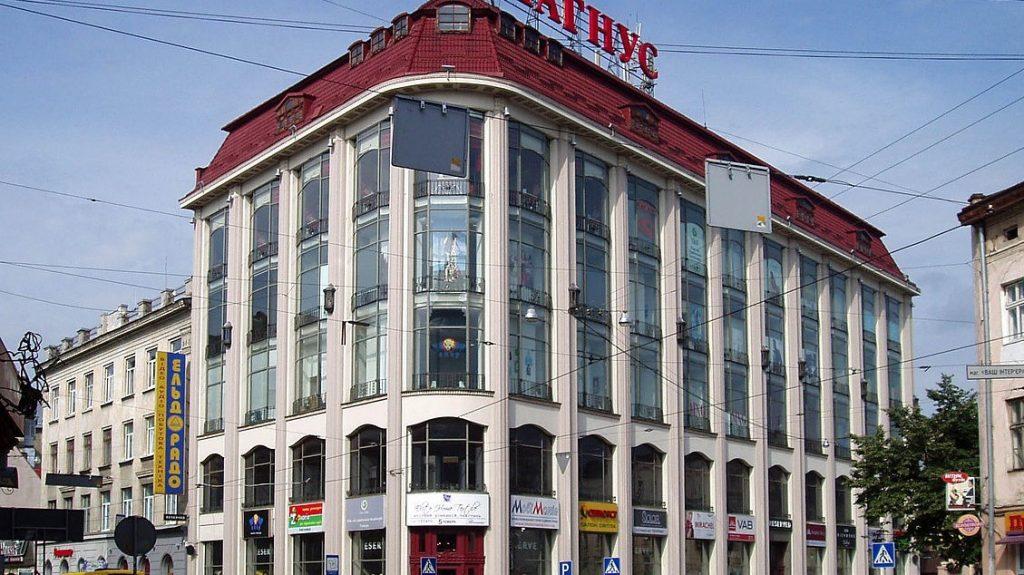
Tadeusz Wróbel
[1886, Sanok — 1974, Wroclaw]
Polish architect and urbanist.
Tadeusz Wróbel became the president of the Lviv Circle of Polish Architects in 1927 and was a member of the Polish Polytechnic Society. In collaboration with Leopold Marcin Karasiński, he founded a design office in Lviv in 1928. The office was responsible for designing numerous residential buildings, including cooperative buildings and villas. From 1939 to 1941, Wróbel headed the Department of City Construction at Lviv Polytechnic.
Styles: Secession, Functionalism
Notable buildings:
- One of the architects of the Professors Colony (1935) Iryny Wilde St., Nishchynskoho St., Mizhhirna St.
- Co-architect of Club of the Union of Municipal Workers (1933-1938) 1 Kushevycha St.

Ferdynand Kassler
[1883 Podgórze (Kraków) — 1942, Lviv in Janowska concentration camp]
Jewish architect.
Ferdynand Kassler began his career as one of the leading architects in Michał Ulam’s firm from 1908 to 1911 and later established his own design office. He designed houses in the Rational Secession and Neoclassical styles, eventually transitioning to Functionalism. Kassler was a member of the board of the Circle of Adherents of Jewish Art in Lviv. Tragically, he lost his life in the Janowska concentration camp.
Styles: Rational Secession, Neoclassicism, Functionalism
Notable buildings:
- Sprecher Building aka Lviv’s first “skyscraper” (1914-1921) 8 Mitskevycha Sq.
- Sprecher Office Building (1929-1931) 7 Shevchenka Ave.
- Co-designer of residential buildings (1912) 11, 11a, 15 Levytskoho St.
